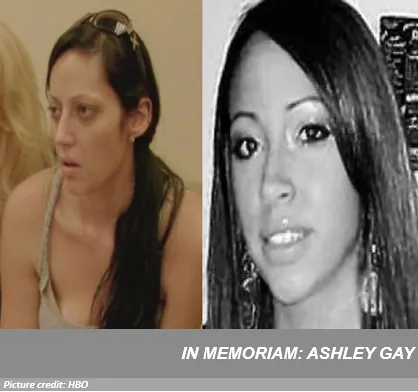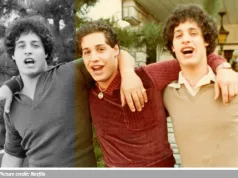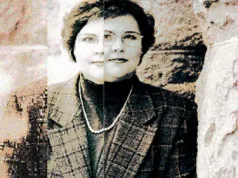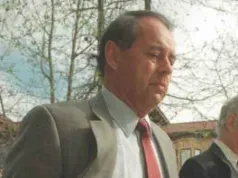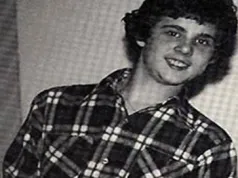Stephany and Ashley Gay were like so many American teenagers, with their whole life ahead of them, school qualifications under their belt, and hope for the future.
As sisters, they were best friends, and did everything together. While this was a wonderful partnership, it became a deadly union in the end.
The story of Stephany and Ashley Gay is a reminder that anyone can suffer from drug addiction, and this case study adds to the extensive list of tragedies linked to America’s ongoing prescription epidemic.
The story of the sisters was featured on HBO’s powerful documentary Warning: This Drug May Kill You, which featured four different families that had been torn apart by opioid addiction, with each telling its own story.
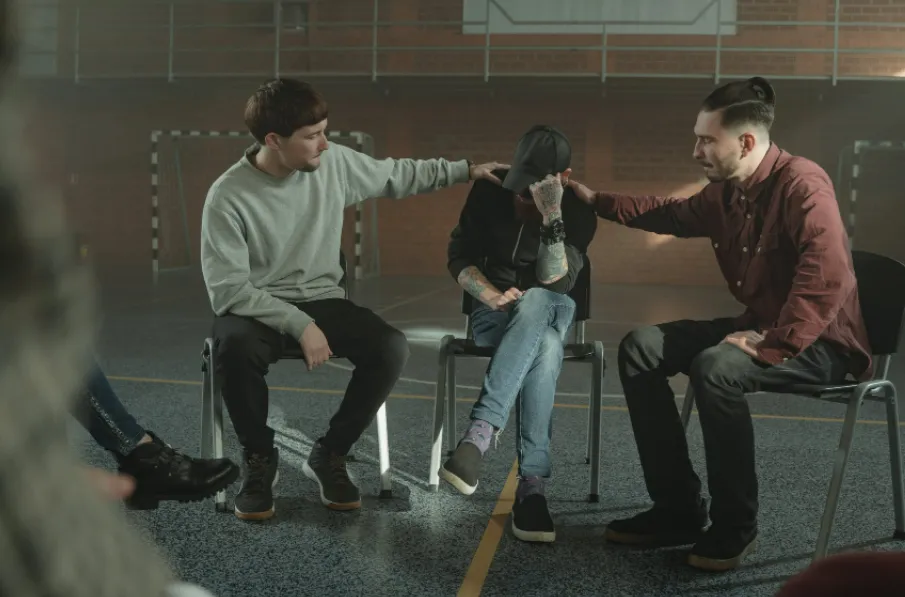
Baby steps to addiction
The long trail towards addiction began when Stephany was diagnosed as having kidney stones – a condition that can cause severe pain. She was just 16 at the time.
At one point, the pain became so severe that Stephany was forced to go to the hospital. She was given a shot of the powerful opioid medication Hydromorphone (better known as Dilaudid).
She was then sent home with a prescription of two medications – Oxycodone (OxyContin) and the Hydrocodone and Paracetamol combination medicine (Vicodin).
While Stephany was somewhat confused by being prescribed both medications, she trusted her doctors, so went ahead and took the medicines.
Then, like so many others, Stephany realised the psychological (short-term) benefits of opioids. She remarked that as well as the pain easing, her feelings numbed, and that she felt “good about everything”.
The Opioids make their mark
Stephany eventually recovered from the kidney stones, but by this point, was already hooked on the opioids. She started to fake intense pain in order to go to hospital and get further prescriptions for painkillers.
She was next prescribed Hydrocodone (Norco), another powerful opioid medication. But Stephany ended up taking far too much, and was regularly getting more prescriptions. It got to the point where Stephany was taking a month’s worth of tablets in just two days.
After trying to come off of Hydrocodone, Stephany told her mother about how she wasn’t feeling very well. Her mother recommended that she went to see a Doctor, who could give advice.
Instead of receiving a proper treatment plan to combat what was clearly an addiction, Stephany was prescribed another opioid – this time the Oxycodone and Paracetamol combination medicine (Percocet). While this wasn’t as strong as the previous opioids, it still had a quantity of oxycodone in it, which had already caused Stephany many problems.
Ashley Gay joins in
Around this time, Ashley took notice of Stephany’s chilled out mood and general happiness, and enquired about what was behind this shift in mood.
She would soon begin her own journey to addiction. It started out innocently, with the occasional pill being taken for a headache, before Ashley started regularly sharing the pills with her sister.
While Ashley joined in with taking pills later than Stephany, she also became hooked rather quickly, and the sisters were on a path towards destruction.
The girls were still under the somewhat naive – but understandable – impression that Stephany’s doctor was acting in her best interest by continuing to write prescriptions.
Heroin
But the Doctor soon curtailed the prescriptions, leaving Stephany and Ashley with withdrawal symptoms. They resorted to buying opioids from friends and street dealers, but this became too expensive.
Soon, the sisters were introduced to what Stephany described as “a small bag”, which they were told to sniff the contents of said bag. They were told that the bag’s contents would give them the same high, but that it was much cheaper.
The sisters did indeed use the drug inside the bag. Stephany described the feeling she got from the contents of the bag as “the best feeling in the world”. But this bag was heroin.
The sisters snorted heroin for a year, despite their mother’s protestations. Their mother – who also candidly spoke on the HBO documentary – said that she told the girls that they didn’t “realise what they were up against”.
The sisters attempted to assuage their mother’s fears by telling her that they weren’t using needles, meaning that they weren’t proper “junkies”. But within weeks, a needle was introduced to them, as people told them that the effects lasted far longer.
Stephany then spoke of how for months, her life consisted of using heroin, sleeping for many hours – and only waking up to be sick. This vicious cycle continued.
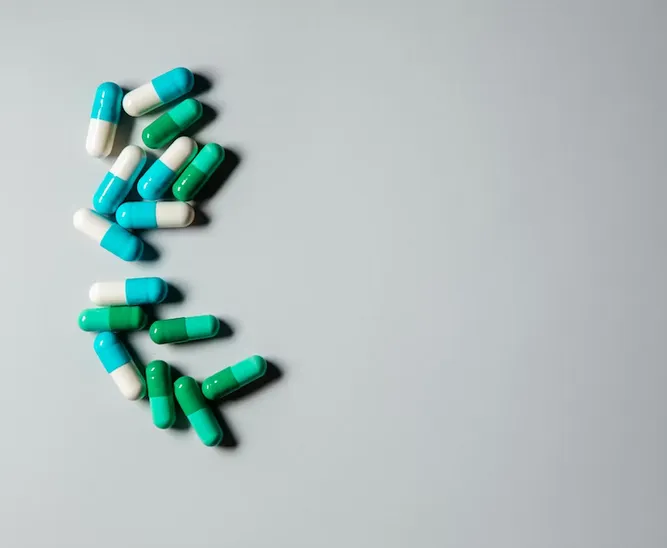
Attempts to get clean
At some point, the girls realised the destructive path that they were on, and after some cajoling by their mother, they booked into rehab.
Stephany had talked about how she felt she was “in a relationship” with heroin. Ashley meanwhile stated that she felt she was a “slave” to heroin, and believing snorting heroin was “no longer a party”.
Stephany was able to get clean, and Ashley also seemed to be doing well. Ashley had managed to get through the hardest stage of recovery – withdrawal – and felt fine. She even left treatment early.
But her mother continued to be worried about Ashley. Ashley had said to her however that she was “too young and pretty to die”. Tragically, this assertion would soon be proven wrong.
Ashley’s death
Soon after leaving rehab, Ashley would sadly pass away. Following an argument with her fiancée, she booked into a motel, where she would unfortunately pass away at some point within the next few hours.
The next morning, her fiancée called Stephany, after he had been unable to reach Ashley. He was at the motel, and frantically tried to force entry to Ashley’s room. He called 911, and after the Police arrived, they entered, only to find Ashley dead from an overdose.
Stephany recalled on the documentary about how she found out about Ashley’s death – after a Police officer had called her to tell her – a moment that caused Stephany’s “whole world” to stop.
Stephany felt suicidal in the wake of Ashley’s passing, and she said that in an effort to try and cope, that she did “loads of drugs”, relapsing in the process.
Stephany’s Relapse
Life after Stephany’s relapse is covered in later parts of the documentary. These parts of the documentary lay bare the power that opioids can have on those addicted.
Stephany’s daughter has now been adopted by Stephany’s own mother, who says that the child – Audrey – needs stability and security, things that Stephany couldn’t provide her with.
An alarming moment sees Stephany’s mother and Audrey talk about where Naloxone (Narcan) is located – the medicine that acts as an antidote in opioid overdoses. A young girl shouldn’t be exposed to this, but she is aware of what she needs to do, should Stephany ever overdose – something that a young girl should never have to go though.
The documentary shows that Stephany looks and acts like a different person after her relapse. Her apartment was a mess, with also signs of drug paraphernalia, like alcohol prep pads – normally used to prepare the skin for injection.
As the documentary catches up with recent developments, it turns out that Stephany hadn’t eaten in 2 days, had bruises and rashes over her skin, and had a black spoon in her bag, which was proof that she was still abusing heroin.
But fortunately, the area where Stephany lives in has a “Way Out” programme, designed to help those who are facing addiction problems. Laura Fry, who works as a Recovery Counsellor, told the documentary about how anyone facing problems can enter the 30-day, state-sponsored programme, and not face any criminal punishments in relation to drug use.
Stephany prepares to attend the programme, only for her to throw up heavily prior to entering. She does eventually go, though the end credits show that Stephany left rehab after just 6 days, and return to using heroin.
Fortunately, the documentary ended by saying that Stephany had enrolled in a medication-assisted treamtent programme.
The cost of addiction
The biggest cost to the Gay family was the loss of Ashley – who clearly meant a great deal to her sister Stephany, and her mother. Stephany tearfully spoke of Ashley’s passing.
Before going on the path of addiction, Stephany owned a 3-bed, 2-storey house, had a 2-year old daughter, and had recently purchased two new cars with her partner – something she described as “a dream life”.
But by the time she had started injecting herself, Stephany had lost her house, the custody of her young daughter, and had seen their cars towed.
But as mentioned, the end of the documentary finishes on a bright note, saying that Stephany has started a new programme.
The mother of the Gay sisters deserves huge credit for all she does for the girls. Adopting Audrey in the short-term was an altruistic act, and she has had to put up with a lot.
2024 Update on Stephany Gay
Time has passed since the documentary, and it seems that Stephany Gay has improved markedly – which is a positive result.
Her social media accounts suggest that she has found love, has custody of Audrey back, and generally looks radiant and positive. There are many photos that show smiling faces – it looks like Stephany is in a good place.
She also pays tribute to Ashley on her account, and seems to have many well-wishers interact with her on social media.
While recovery from addiction is a long road, Stephany appears to be very much in recovery, which provides a heart-warming end to this situation.
Summary
This death was avoidable, and what started as trying to control the pain of kidney stones, became a full-blown heroin addiction, which ultimately killed Ashley, and left Stephany and her mother devastated.
Ashley Gay passed away in 2013, and her death underlines the importance of the wider public being educated about the horrors that prescription opioids can cause.
When used correctly, opioids can be highly effective, and literally save lives. But they have a dark, dark side to them, as the Gay family harrowingly found out.
If you have been affected by any of the content in this article, you can see our crisis resources at this link.
Disclaimer
This website should be used purely for informational purposes, and does not intend to, nor should it ever, be used as a replacement for professional medical advice.
We strive to keep all of our pages updated, and ensure that our website is full of factual and in-depth information. However, we encourage you to browse this website with care.
As a reminder, this website and all content within it cannot and should not replace the advice of a trained medical professional. You can read our full disclaimer at this link.
Helplines
If you are struggling with your mental health, help is available. With the right support and treatment, you can make a recovery. For information on helplines, or if you are in a state of crisis, please visit our crisis page by clicking on the relevant link for your geographical location (United Kingdom), (United States), (International). You can also see how to get mental health treatment and the process involved by clicking this link.

